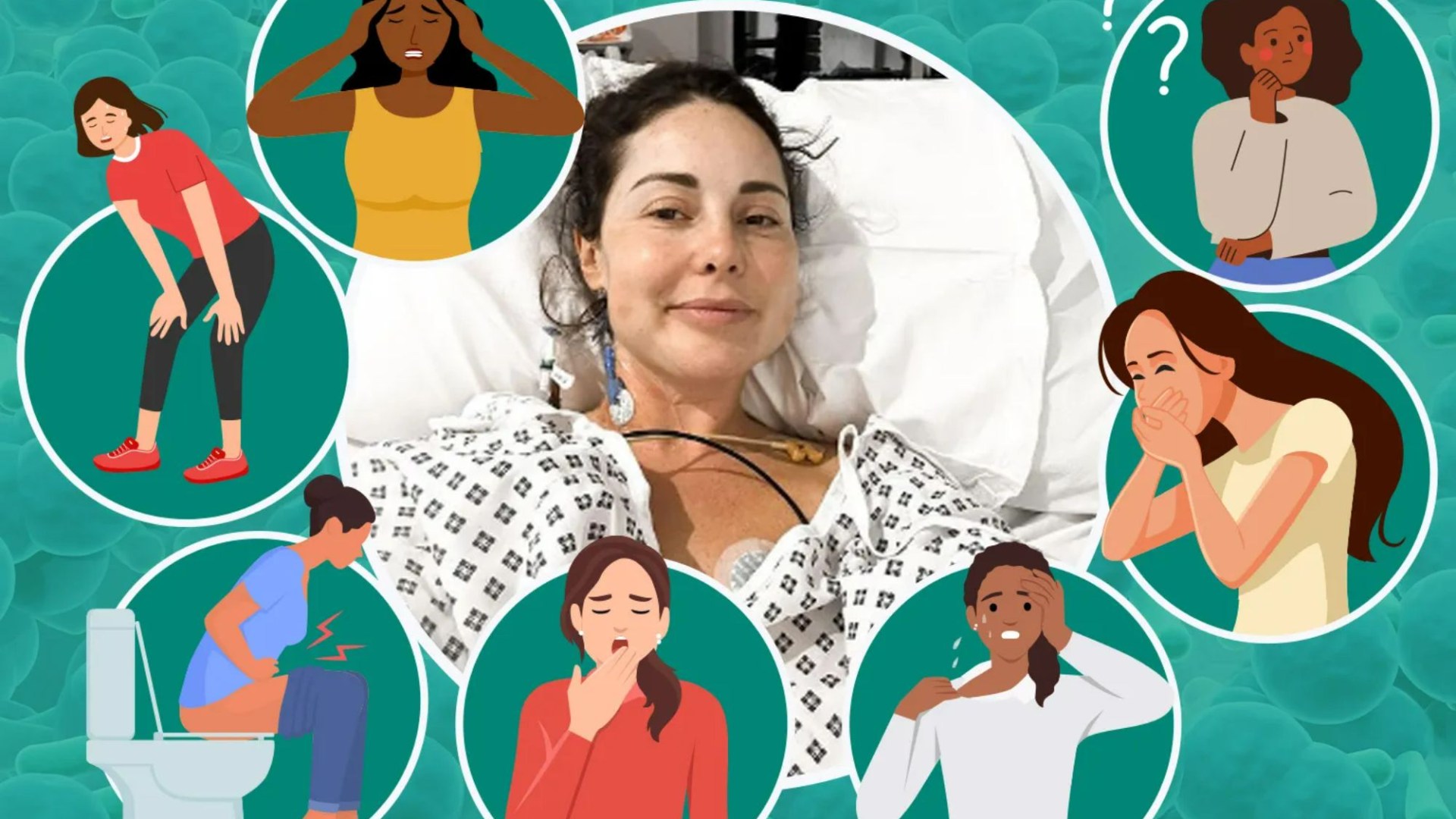SEPTIC shock is life-threatening – but would you know how to spot it?
Former Made in Chelsea star Louise Thompson, 34, has been in hospital for two weeks with septic shock after an emergency surgery – but it can occur to anyone, and at any time.
4

4
The condition can damage the lungs, kidneys, liver and other organs – and be fatal.
The medical condition occurs when blood pressure drops dangerously low after an infection.
Louise has faced a difficult health journey over the years after being diagnosed with ulcerative colitis – a long-term condition where the colon and rectum become inflamed.
In April this year she was fitted with a stoma bag which she’s nicknamed ‘Le bum bag’.
But, after experiecing excruciating pain in her abdomen, was rushed to A&E at 3.30am nine days ago.
Her fiance Ryan Libbey revealed on their podcast He Said She Said this week: “Sadly Louise is not here this week.
“She had to go back into hospital almost two weeks ago for another emergency operation in the same tummy area that she’s been recovering from since earlier this year with her stoma surgery.
“It was completely unexpected.
“Her recovery has been up and down. Post-surgery she was in septic shock, which shows the severity of how bad things got.
“She was heavily medicated with lots of cannulas and tubes coming out of her. To see that again, with her in intensive care, was extremely heartbreaking.”
Louise has said on Instagram that “the world has been unkind to me again”.
Causes of septic shock
Any type of bacteria can cause the condition, and it becomes more dangerous the longer it is left untreated.
At first, you might experience weakness, chills and a rapid heart rate and breathing, according to the NHS.
Sweating for no clear reason, shivering and a change in mental status are also common indicators of sepsis.
But once the toxins harm the small blood vessels and leak fluid into the surrounding tissues, this can affect your heart’s ability to pump blood.
If blood doesn’t reach your vital organs, such as your brain and liver, this can lead to death.
In some people, it can be very obvious this is happening and they will be visibly unwell.
But for others, signs of septic shock can be difficult to spot.

4
Septic shock symptoms
There are some behaviours which could indicate you’re at risk.
This includes several that are most noticeable in the morning – such as finding it difficult to stand up or feeling lightheaded – which might be particularly perceptible when first waking up or getting dressed.
Generally, the most common symptoms of septic shock are:
- Not being able to stand up
- Dizziness or feeling lightheaded
- Strong sleepiness or finding it a hard time to stay awake
- A major change in mental status, such as extreme confusion or disorientation
- Diarrhoea
- Nausea and vomiting
- Cold, clammy and pale skin
Treating septic shock
If you or someone you know is experiencing these symptoms, you should call 999.
This is especially important for newborns, the elderly, those who are pregnant, people with long-term health conditions (such as diabetes or kidney failure), and anyone with a lowered immune system (like those with HIV or AIDS or receiving chemotherapy), as they are most at risk.
Thankfully, once you receive medical help, there are treatments available.
These include oxygen therapy, intravenous fluids, medication, antibiotics and surgery.
The chances of surviving septic shock depend on the cause of the infection, the number of organs that have failed and how soon treatment is started, the NHS says.
Most people recover from mild sepsis, but the mortality rate for septic shock is about 30 to 40 per cent, according to Mayo Clinic.
Potential complications include respiratory failure, heart failure, kidney failure and abnormal blood clotting.
What is sepsis and septic shock?
SEPSIS is a life-threatening condition that arises when the body’s response to an infection injures its own tissues and organs.
It occurs when the body’s immune system – which normally helps to protect us and fight infection – goes into overdrive.
It can lead to shock, multiple organ failure and sometimes death, especially if not recognised early and treated promptly.
Sepsis is indiscriminate: while it primarily affects very young children and older adults, and is also more common in people with underlying health conditions, it can sometimes be triggered in those who are otherwise fit and healthy.
Sepsis always starts with an infection, and can be triggered by any infection including chest infections and UTIs.
It is not known why some people develop sepsis in response to these common infections whereas others don’t.
In the UK, five people die with sepsis every hour.
How to spot sepsis in adults:
- Slurred speech or confusion
- Extreme shivering or muscle pain
- Passing no urine (in a day)
- Severe breathlessness
- It feels like you’re going to die
- Skin mottled or discoloured
How to spot sepsis in children:
- Breathing very fast
- ‘Fits’ or convulsions
- Looks mottled, bluish, or pale
- A rash that does not fade when you press it
- Very lethargic or difficult to wake
- Feels abnormally cold to touch
How to spot sepsis in kids under five:
- Not feeding
- Vomiting repeatedly
- Has not passed urine for 12 hours
Source: The UK Sepsis Trust

4




